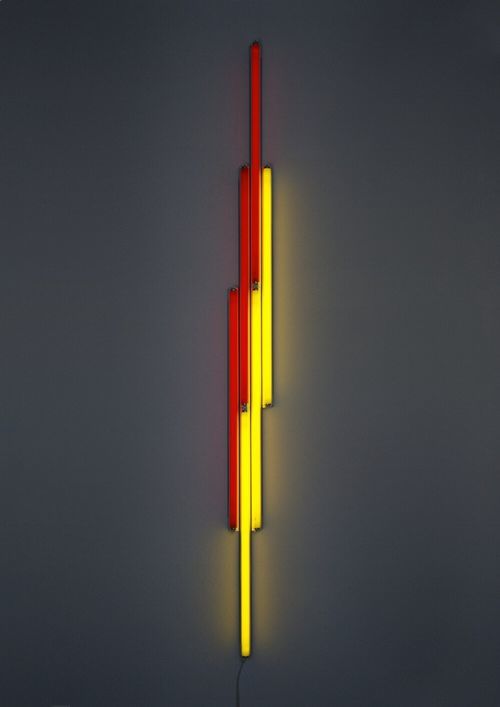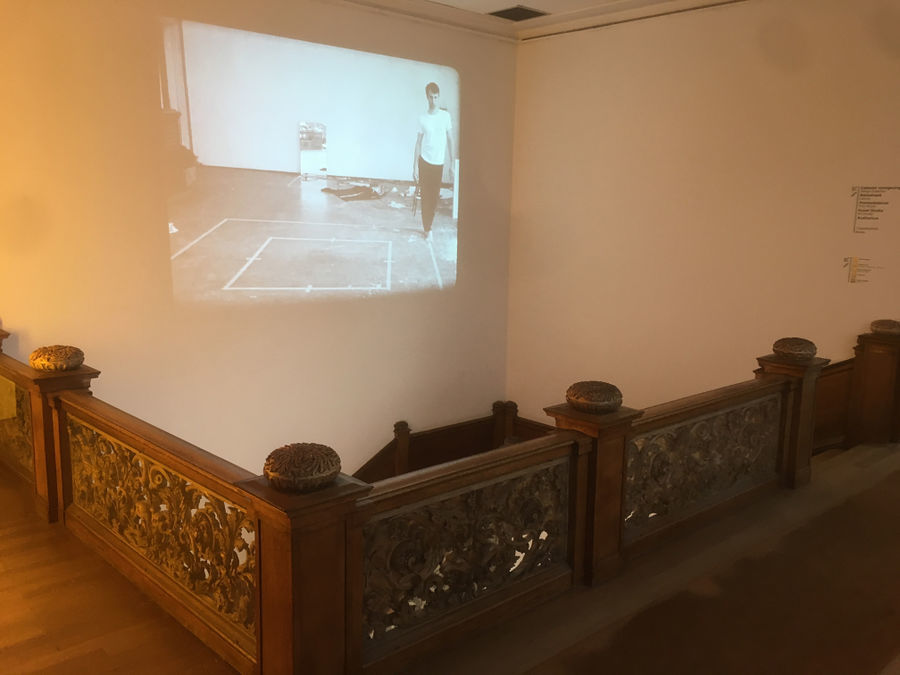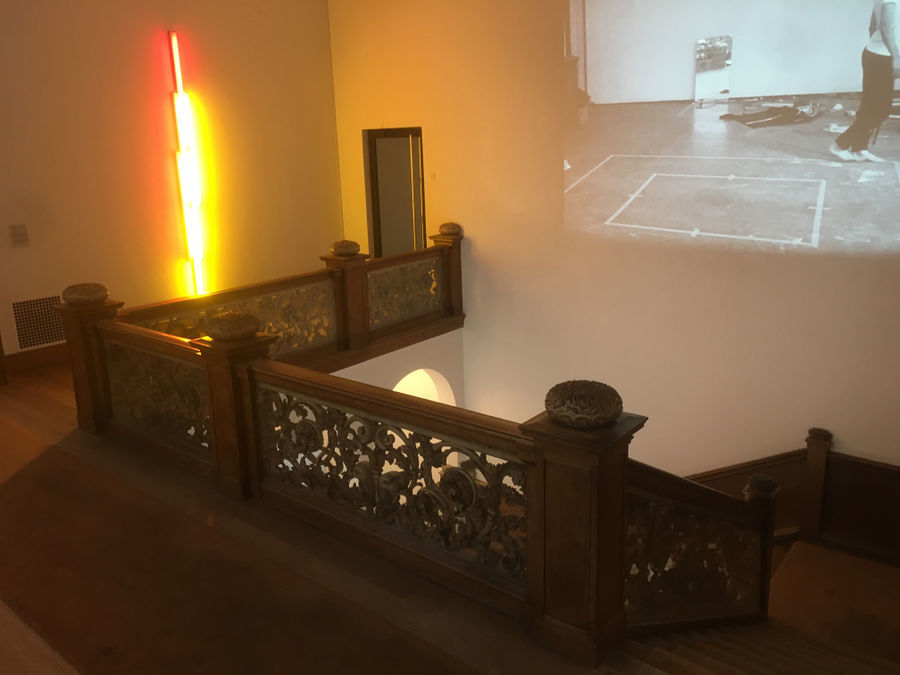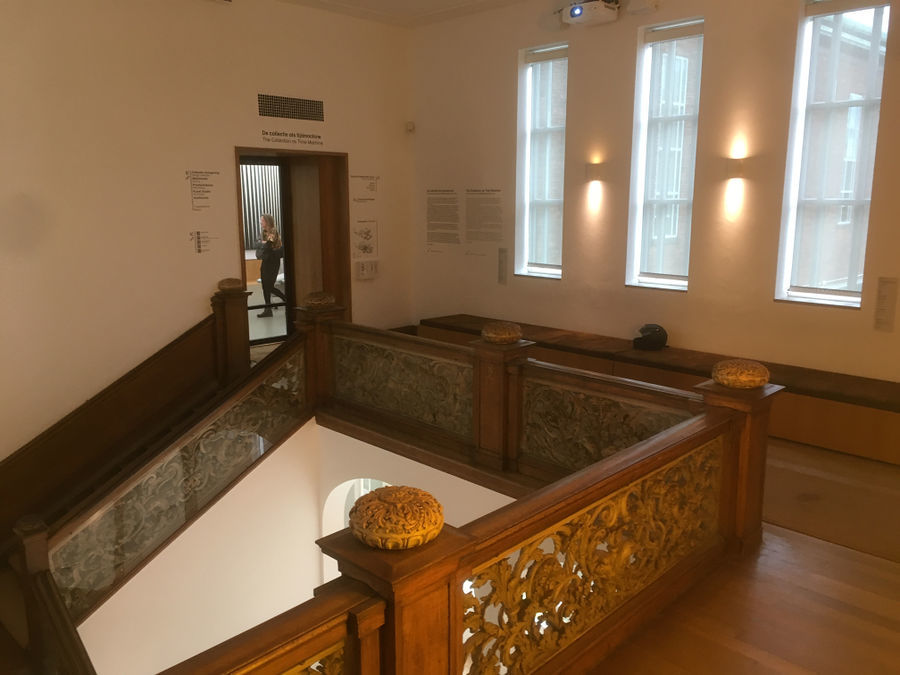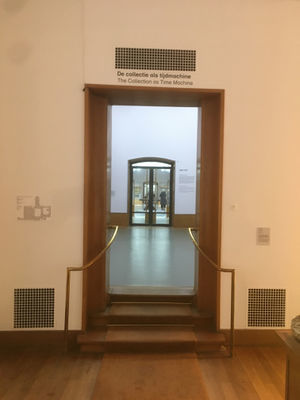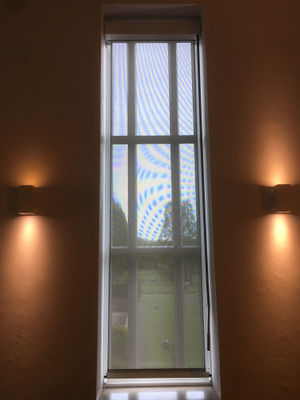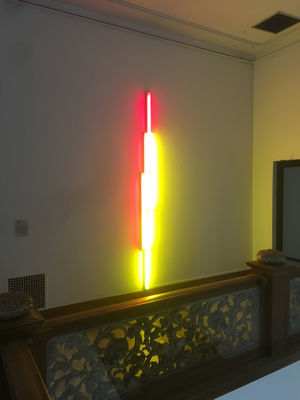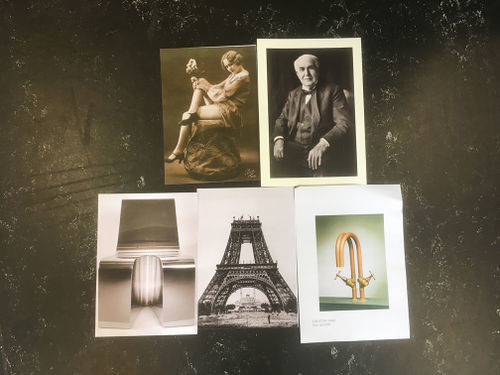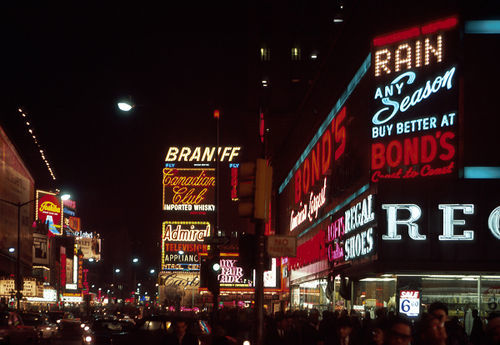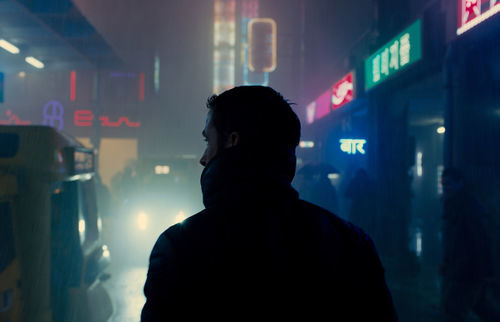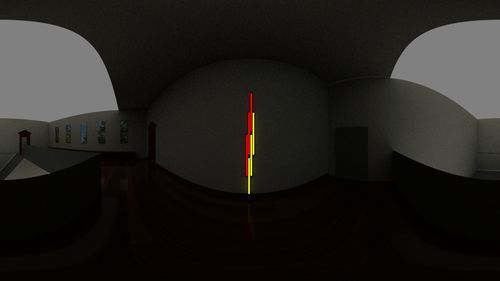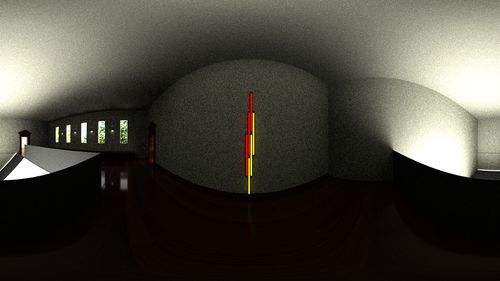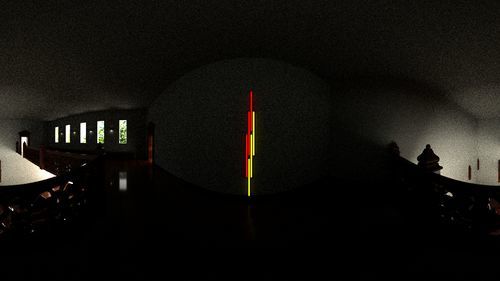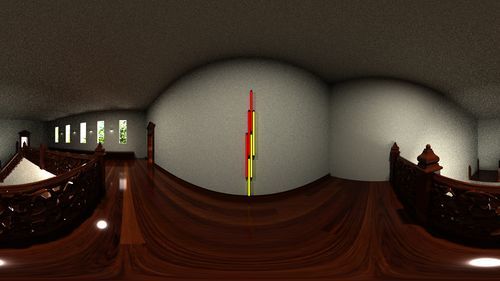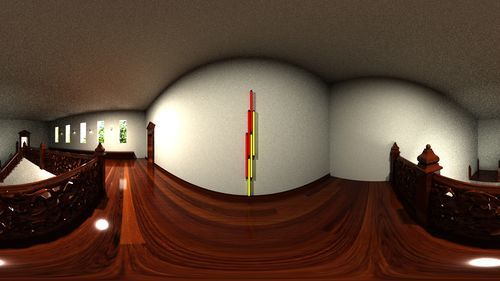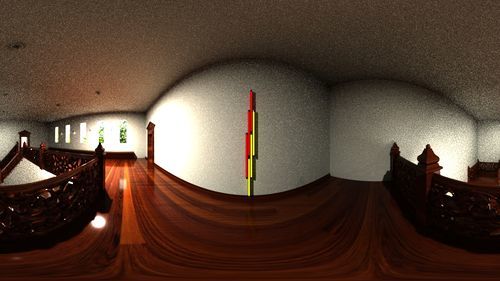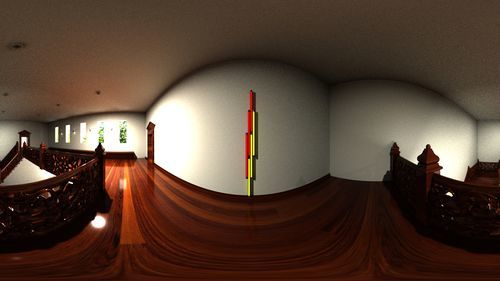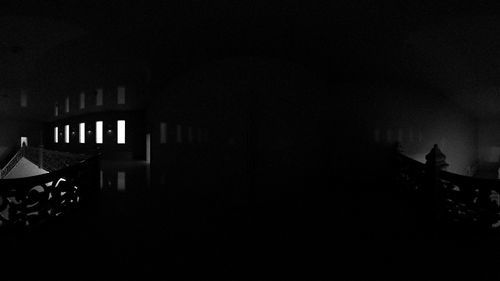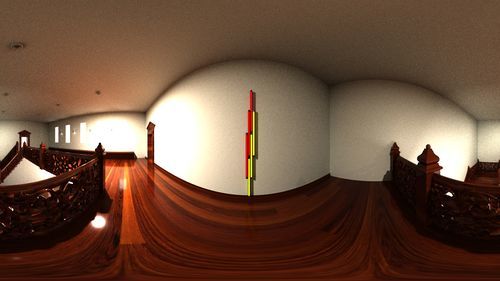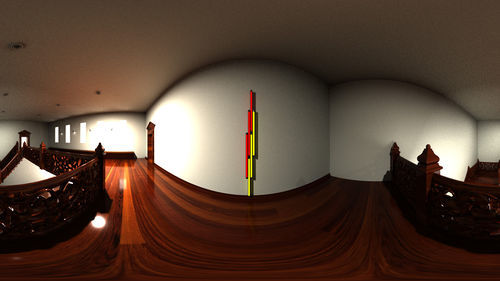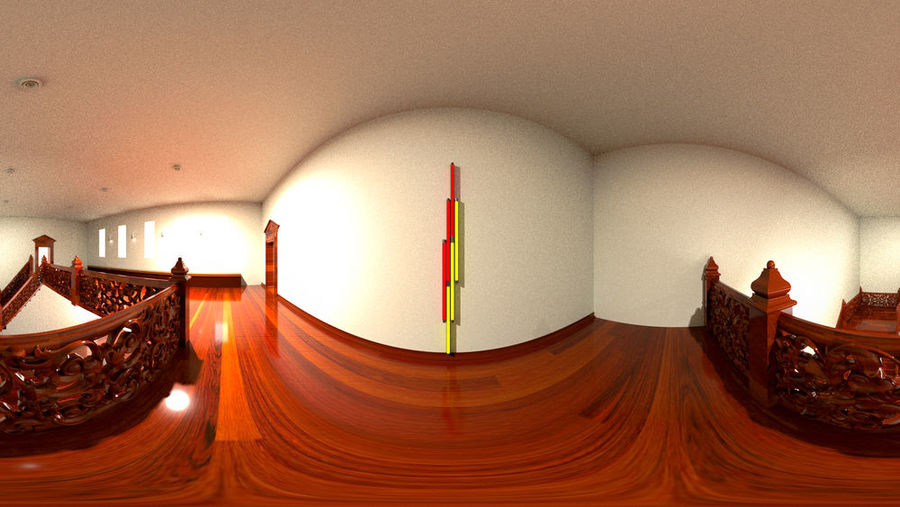User:NielsH
Contents
The artwork
Untitled by Dan Flavin 1968
The location within Boijmans
The research
Links
- Over Dan Flavin
- In Boijmans collectie
- Discussie over zijn werk
- Over Dan en zijn werk
- Concept of light
- Divine Light
- Appropriation in arts
- Readymades
Mappings
The fictional history and future
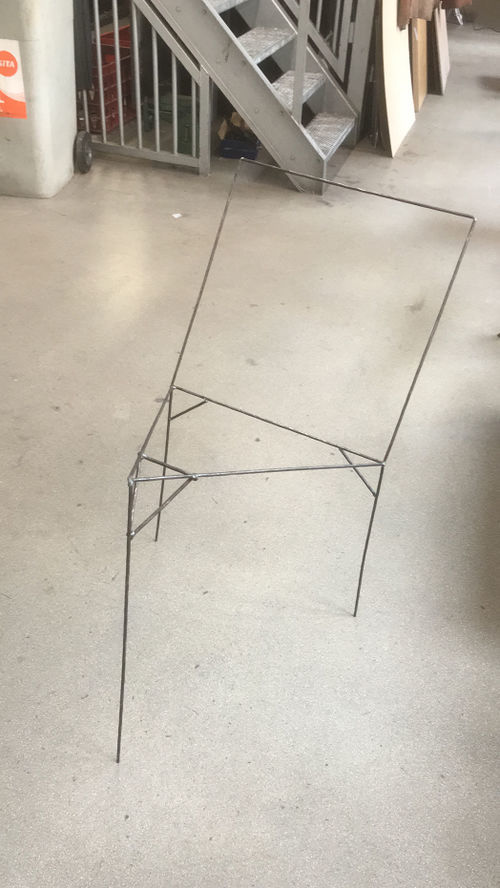
Fictional history of Joep Hurkmans
Playing with the an opposite forced seating position that might have been the only one
back in the day.
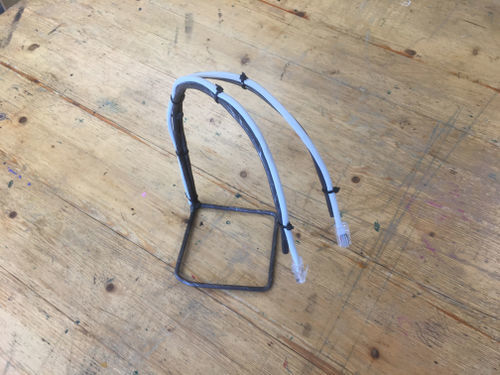
Fictional future of Jelle van Bouwhorst
Introducing the idea an apocalyptic future where there is no more water and only
machines are left. Turning the faucet into an ethernet
access point.
The statement
The artwork that I chose is a light sculpture from Dan Flavin. It is tucked away in a corner of the Boijmans. A shame if you ask me. Because Dan Flavin’s work is suppose to be a complimentary addition to the architecture. An interesting statement by Flavin about his work: “It is what it is and ain’t nothing else”. An artist can say this about their own work but sometimes it creates meaning without being it the intention. The combination of the use of readymade objects makes me think of Marcel Duchamp’s Fountain. Taking an ordinary object and using it to create new meaning.
Dan Flavin was born in New York and during my research I found a picture of Times Square in the 1970’s. instead of the fancy LED screens we have now, the place back then was filled with fluorescent lights. My chosen artwork was also made around 1970 and I’d like to believe that Flavin got his inspiration for his works from places like Times Square.
For me, the lights spoke to me because I love their connection with both the past, the present and the future. When I think of cyan and magenta colored neon lights I start hearing 80’s music in the back of my mind. But I also start to think of the cyberpunk style of the future that has been gaining a lot of popularity (the new Bladerunner for instance). Because of this influence, it has made the lights almost a pop icon for me. I’ve always thought they looked cool because I always saw them in cool places.
After the first brainstorm session I liked the idea of playing with the different ways of looking at light. In a religious way of looking at light, it is a synonym for truth, divinity, good. How can I implement Flavin’s work in this different concept? Could his light be transformed into something holy? What would this do to his work? And what would this do to the divinity? But after discussing it with students and tutors the conclusion was that placing Flavin’s work into a divine setting wasn’t a desirable scene and probably wouldn’t fetch the new insight’s we were going for.
A different approach was to dissect the artwork. As Flavin stated: “It is what it is and ain’t nothing else”. Then let’s really find out what it is! How can I take an artwork and pull it apart, study what it’s made from and show this in a different way? My idea was to show the original, and next to that show a visualisation of the wavelengths of the colors. To see and comprehend what this artwork is made of. But, how am I going to show this?
At first I thought of making the wavelengths of the different colors from metal bars. This contradiction between light, something that almost has no mass, and something heavy like metal was an interesting starting point. But after speaking with the metal workshop tutor this seemed not feasible. But also when we talked about this idea in class it lacked a digital part. I also didn’t like that I wasn’t able to actually recreate the original.
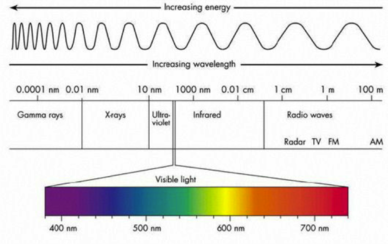
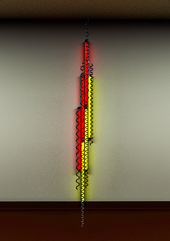
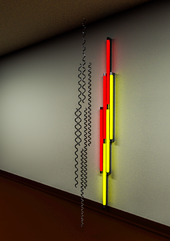
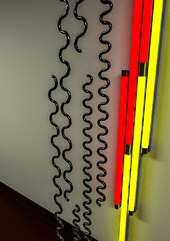
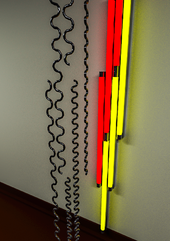
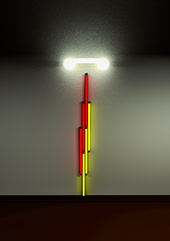
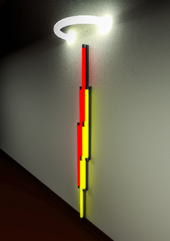
Initial visualisations of the idea's
So how do I take this project to the next level? How can I recreate the original and appropriate it in a digital way so that you can see what the original artwork is made from? I already recreated the artwork in 3D so I could show the tutors my idea. Why not use this and make a variation?
My new goal was to create a 360 video that you can see with VR glasses. When looking at my video you first see the original artwork in the recreated space of the Boijmans. Than after a couple of seconds it switches. To reveal the underlying dissected version of the artwork. Essentially Flavin’s work consists out of a small selection of the visible spectrum. A collection of wavelengths at different frequencies.
The craft that I used for this practice is a mixture of dissenting, clarifying and visualizing. While working on this short but strong project I almost felt like a biologist. Researching a newly found species and trying to find out where it came from, how it got there and what it’s made from. After this research was done I had to of course show the results of my research to those who are interested. Through the virtual reality bubble they get to experience the one essential aspect of Flavin’s work. The relation of the work with the space it is in. After a couple of seconds they get to see my visualisation of Flavin’s quote. They get to see the different frequencies of the wavelengths. I believe that showing the difference between an artwork itself and their material properties can be very interesting. Imagine a museum or gallery that you can enter in virtual reality and with the click of a button you could find out everything you wanted to know about the material, the process and the artist himself.
The result
Test renders
Final virtual reality video
https://www.youtube.com/watch?v=TW8rX5s1KDc&t=116s Click here to view the 360 video!]
